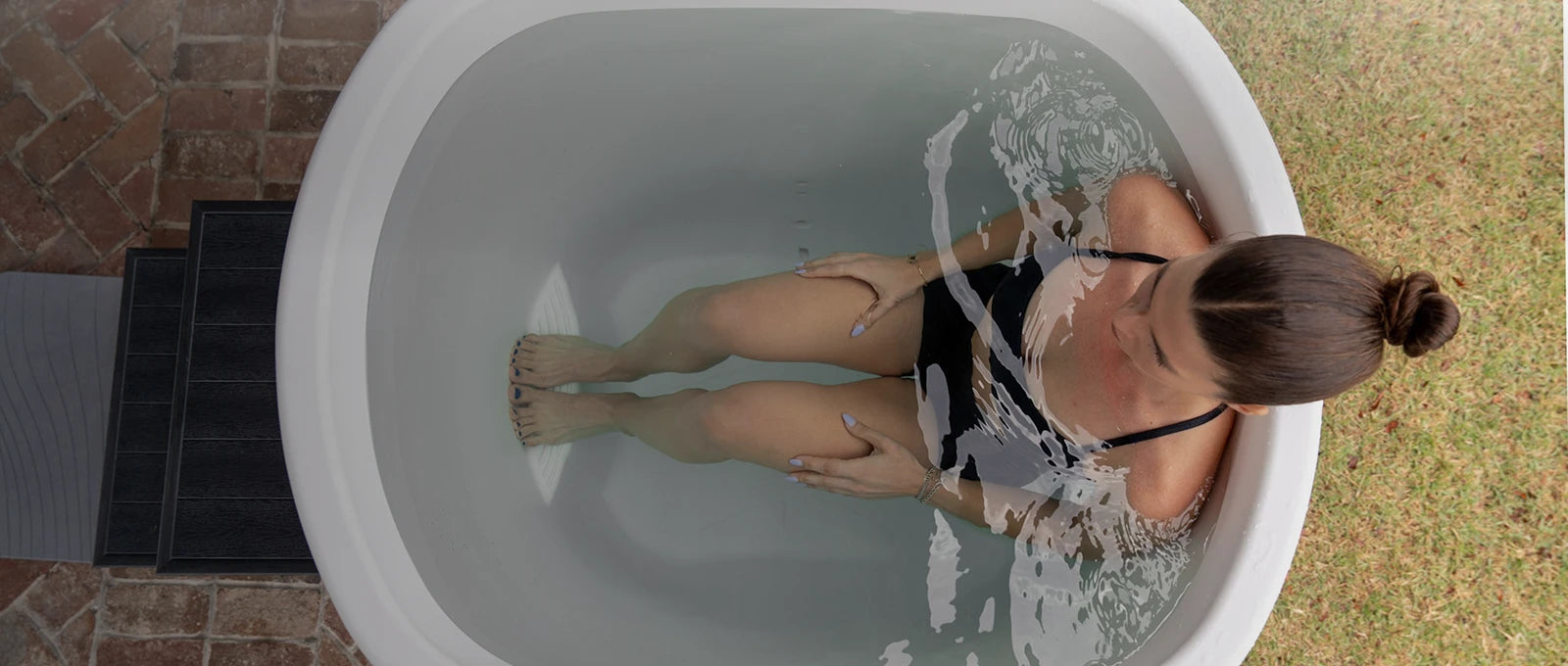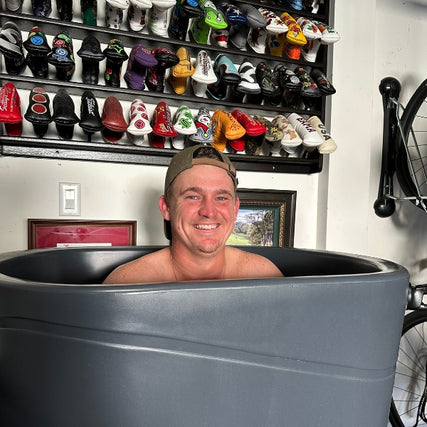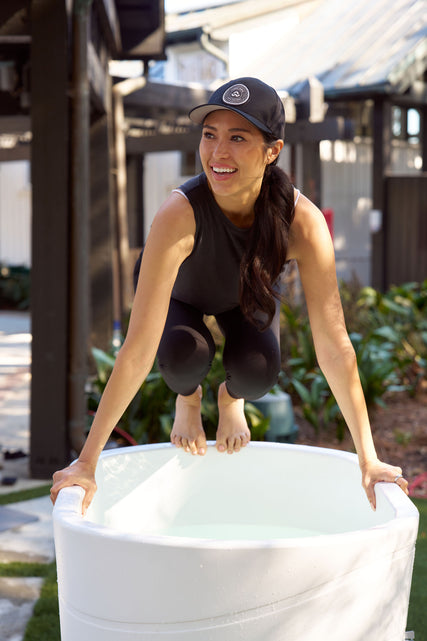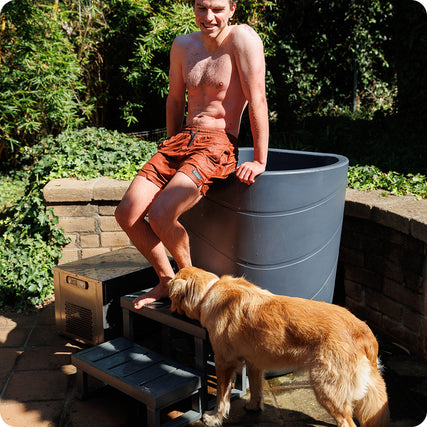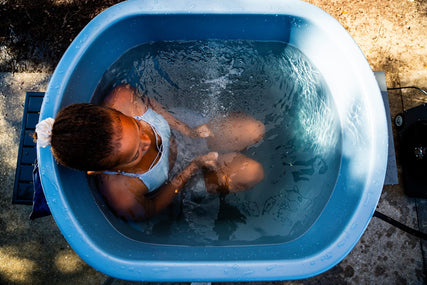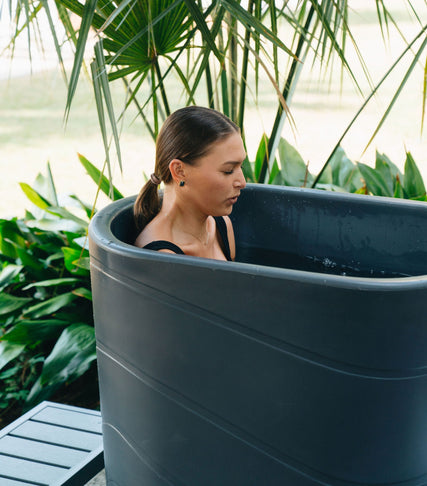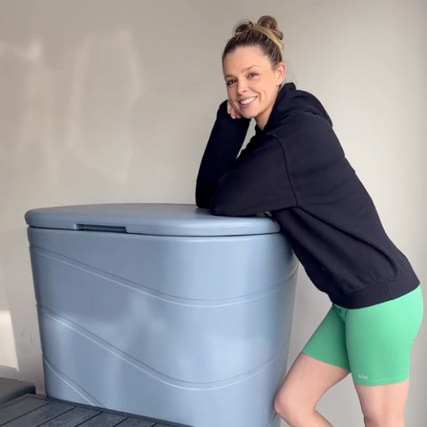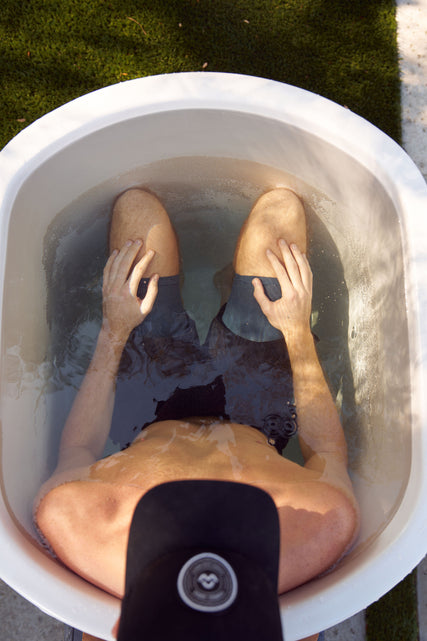Science
At Nordic Wellness, we unite the art of breathing with the power of cold to create resilience from the inside out. Every technique is grounded in modern physiology, neuroscience, and psychology—helping you regulate stress, recover faster, and live longer through mindful control of your mental and physical health.
Cold Plunging
Cold exposure acts as a mild stressor—a form of hormesis—activating the sympathetic system and releasing norepinephrine. With practice, the body adapts, improving emotional regulation and stress tolerance.
References: Huttunen et al., Int. J. Circumpolar Health, 2004 — “Winter swimmers show improved stress tolerance and mood.” Huberman, The Science of Cold Exposure, 2024.
Breathwork
Breathing is the only function we can consciously control that directly influences the autonomic nervous system (ANS). Slow, nasal breathing increases vagal tone, lowers cortisol, and stabilizes the nervous system.
References: Russo et al., Frontiers in Human Neuroscience, 2017 — “Slow breathing increases HRV and vagal activation.” Ma et al., Journal of Clinical Medicine, 2021 — “Breath-based meditation reduces stress and anxiety.”
Combination of Breathwork + Cold Plunging
When practiced together, breathwork and cold exposure train the nervous system to move fluidly between activation and relaxation, creating greater adaptability under stress.
Reference: Kox et al., PNAS, 2014 — “Voluntary activation of the sympathetic nervous system via breathing and cold exposure.”
Science
-
ADHD & Focus
Cold exposure increases levels of dopamine and norepinephrine, improving attention, motivation, and cognitive clarity for several hours after a plunge. This neurochemical boost enhances both mental performance and mood, creating a clear, energized state without overstimulation.
References: Shevchuk, Medical Hypotheses, 2008 — “Cold showers as treatment for depression.” van Tulleken et al., BMJ Case Reports, 2018 — “Cold-water swimming improves mood and anxiety.” Huberman, The Science of Cold Exposure, 2024.Breathwork increases oxygen efficiency, balances CO₂ levels, and engages regions of the brain responsible for focus and executive control. Controlled nasal breathing helps synchronize brain wave patterns, improving sustained attention and mental endurance.
References: Zaccaro et al., Frontiers in Human Neuroscience, 2018 — “Breathing exercises alter brain regions involved in emotion regulation.” Russo et al., Frontiers in Human Neuroscience, 2017.When practiced together, breathwork and cold exposure heighten focus through both calm and alert pathways. Breathwork provides steadiness and control, while cold exposure energizes neurochemistry—resulting in heightened awareness, confidence, and mental clarity.
References: Kox et al., PNAS, 2014. Huberman, The Science of Cold Exposure, 2024. -
Anxiety
Cold exposure creates a controlled stress response that activates the sympathetic nervous system, releasing norepinephrine and endorphins. This brief activation triggers a subsequent parasympathetic rebound, which calms the body and mind. Over time, regular cold plunging trains your nervous system to handle stress more efficiently, reducing baseline anxiety and improving emotional stability. Research shows cold immersion elevates mood-regulating neurotransmitters like dopamine and serotonin, promoting long-lasting feelings of calm and focus.
References: Huttunen et al., Int. J. Circumpolar Health, 2004 — “Winter swimmers show improved stress tolerance and mood.” Shevchuk, Medical Hypotheses, 2008 — “Cold showers as treatment for depression.” Huberman, The Science of Cold Exposure, 2024.Breathwork directly influences the autonomic nervous system by activating the vagus nerve and shifting the body toward a parasympathetic, relaxed state. Slow nasal breathing lowers cortisol and heart rate, while rhythmic or box breathing patterns enhance emotional regulation and cognitive control. Studies show that slow, deliberate breathing decreases amygdala activity—the brain’s fear center—resulting in measurable reductions in anxiety and tension.
References: Russo et al., Frontiers in Human Neuroscience, 2017 — “Slow breathing increases HRV and vagal activation.” Ma et al., Journal of Clinical Medicine, 2021 — “Breath-based meditation reduces stress and anxiety.”When combined, breathwork and cold exposure create a powerful form of adaptive training for the nervous system. Breathwork prepares the body for immersion by stabilizing CO₂ and calming the mind, while cold exposure adds a dose of hormetic stress that builds resilience. Practicing both together improves vagal tone, increases heart-rate variability, and strengthens the brain’s capacity to recover from stress—all leading to reduced anxiety over time.
References: Kox et al., PNAS, 2014 — “Voluntary activation of the sympathetic nervous system through breathing and cold exposure.” Huberman, The Science of Cold Exposure, 2024. -
Cardiovascular Health
Cold exposure trains blood vessels through cycles of constriction and dilation, improving vascular elasticity and promoting circulation efficiency. Over time, it enhances endothelial function and cardiovascular resilience.
References: Tipton et al., Experimental Physiology, 2017 — “Cold water immersion and cardiovascular adaptation.” Lombardi et al., Eur J Appl Physiol, 2017.Breathwork enhances vascular health by improving oxygen–carbon dioxide balance, increasing nitric oxide, and reducing blood pressure through parasympathetic activation. Slow breathing patterns around six breaths per minute are shown to lower systolic and diastolic pressure.
References: Joseph et al., Frontiers in Physiology, 2022 — “Breathing exercises and endothelial function.” Oneda et al., Hypertension Research, 2020 — “Slow breathing improves blood pressure in hypertensive patients.”Breathwork and cold exposure together create powerful cardiovascular conditioning. Breathwork improves internal control of vascular tone, while cold plunging strengthens vessel walls and enhances circulation efficiency—resulting in improved heart rate variability and reduced inflammation.
References: Kox et al., PNAS, 2014. Huberman, The Science of Cold Exposure, 2024. -
Heart Rate Variability (HRV)
Cold plunging stimulates both the sympathetic and parasympathetic branches of the autonomic nervous system, creating balance and adaptability that improve HRV over time. The rebound relaxation phase after cold exposure increases vagal tone and heart-brain coherence.
References: Garet et al., Eur J Appl Physiol, 2004.Breathwork enhances HRV by directly activating the vagus nerve and stabilizing the rhythm of the heart through controlled, slow breathing. Higher HRV indicates greater resilience, emotional stability, and recovery capacity.
References: Laborde et al., Frontiers in Psychology, 2017 — “HRV as an index of self-regulation.” Russo et al., Frontiers in Human Neuroscience, 2017.Together, breathwork and cold exposure optimize HRV by teaching the nervous system to switch fluidly between activation and rest, improving total stress adaptability.
References: Kox et al., PNAS, 2014. -
Immune Function
Cold exposure elevates norepinephrine and increases white blood cell count, enhancing immune readiness and reducing inflammation. Regular exposure strengthens the body’s resilience to environmental stress and pathogens.
References: Buijze et al., PLOS ONE, 2016 — “Cold shower routine reduces illness-related absenteeism.” Huberman, The Science of Cold Exposure, 2024.Breathwork techniques involving controlled hyperventilation and breath retention have been shown to modulate immune signaling, increase adrenaline, and suppress pro-inflammatory cytokines.
References: Kox et al., PNAS, 2014 — “Breathing techniques influence immune response to endotoxin.”Together, these practices enhance immune function by training both the nervous and endocrine systems to respond with balance and precision to everyday stressors.
References: Kox et al., PNAS, 2014. Buijze et al., PLOS ONE, 2016. -
Pain Management
Cold exposure reduces pain perception through endorphin release and localized anti-inflammatory effects. Immersion therapy decreases nerve excitability and provides natural analgesia during recovery.
References: Lombardi et al., Eur J Appl Physiol, 2017.Breathwork reduces pain by calming the nervous system and shifting perception away from discomfort. Slow exhalations and controlled breath-hold techniques improve pain tolerance through vagal activation and focused awareness.
References: Ma et al., Journal of Clinical Medicine, 2021. Russo et al., Frontiers in Human Neuroscience, 2017.Combined, breathwork and cold plunging offer a dual mechanism—physical desensitization from cold and mental reframing through breath—that enhances overall pain resilience.
References: Huttunen et al., Int. J. Circumpolar Health, 2004. -
Recovery & Performance
Cold immersion accelerates recovery by reducing muscle soreness, inflammation, and oxidative stress. It constricts blood vessels and then promotes reactive vasodilation, flushing out metabolic waste and enhancing nutrient delivery to muscles.
References: Peake et al., J Physiol, 2017 — “Cold water immersion for recovery after exercise.” Lombardi et al., Eur J Appl Physiol, 2017.Breathwork improves oxygen utilization, CO₂ tolerance, and energy efficiency during and after physical exertion. Slow rhythmic breathing increases nitric oxide and enhances blood flow, supporting faster tissue repair and endurance.
References: Chia et al., Sports Medicine, 2020 — “Breath control improves exercise performance and recovery.” Joseph et al., Frontiers in Physiology, 2022.Combined, breathwork and cold exposure amplify recovery. Breathwork supports oxygen exchange and metabolic restoration, while cold exposure reduces inflammation and supports the parasympathetic rebound needed for growth and repair.
References: Roberts et al., J Physiol, 2015. Peake et al., J Physiol, 2017. -
Sleep & Insomnia
Cold plunging in the late afternoon or early evening lowers core body temperature, helping the body transition naturally into sleep. This cooling effect promotes melatonin release and improves sleep onset latency and deep sleep quality. Cold exposure can also reduce nighttime restlessness by resetting circadian rhythm signals and calming the nervous system after daily stressors.
References: Craig et al., Chronobiology International, 2019 — “Thermoregulatory pre-sleep cooling enhances sleep.” Vybíral et al., Eur J Appl Physiol, 2000 — “Cold immersion improves sleep quality and wellbeing.”Slow nasal breathing before bed activates the parasympathetic nervous system, slows heart rate, and increases heart rate variability—all essential for restorative sleep. Breathwork practices such as 4-7-8 breathing or extended exhalation patterns have been shown to lower nighttime cortisol and improve overall sleep efficiency.
References: Tsai et al., Journal of Sleep Research, 2022 — “Slow breathing enhances sleep quality.” Jerath et al., Medical Hypotheses, 2006 — “The physiology of pranayama and autonomic control.”Combined breathwork and cold exposure optimize circadian rhythm alignment. The parasympathetic activation from breathwork complements the thermoregulatory cooling of cold immersion, resulting in faster sleep onset, deeper sleep cycles, and improved morning alertness.
References: Tsai et al., Journal of Sleep Research, 2022. Craig et al., Chronobiology International, 2019. -
Stress & Relaxation
Cold exposure stimulates the release of norepinephrine and endorphins, which heighten alertness but are followed by a strong parasympathetic rebound—creating deep calm and clarity. Over time, this trains your nervous system to handle stress with more stability and faster recovery. Regular plunging improves your ability to stay composed in high-pressure situations by teaching your body how to downshift after activation.
References: Huttunen et al., Int. J. Circumpolar Health, 2004. Huberman, The Science of Cold Exposure, 2024.Breathwork promotes relaxation through vagal activation and rhythmic control of the heart and lungs. Slow, controlled breathing reduces cortisol, stabilizes the nervous system, and induces a meditative calm within minutes. Techniques such as coherence or box breathing enhance emotional balance and resilience to everyday stressors.
References: Russo et al., Frontiers in Human Neuroscience, 2017. Ma et al., Journal of Clinical Medicine, 2021.When practiced together, breathwork and cold exposure provide a complete stress regulation system—activation through cold, and restoration through breath. This combination builds adaptive control, allowing you to maintain calm focus in the face of challenge and recover more efficiently afterward.
References: Kox et al., PNAS, 2014. Huberman, The Science of Cold Exposure, 2024.
